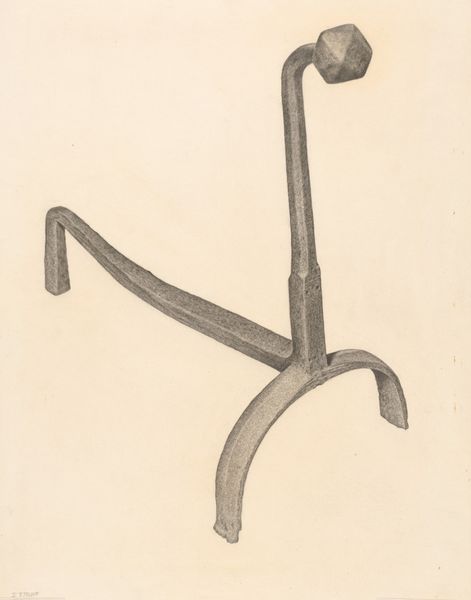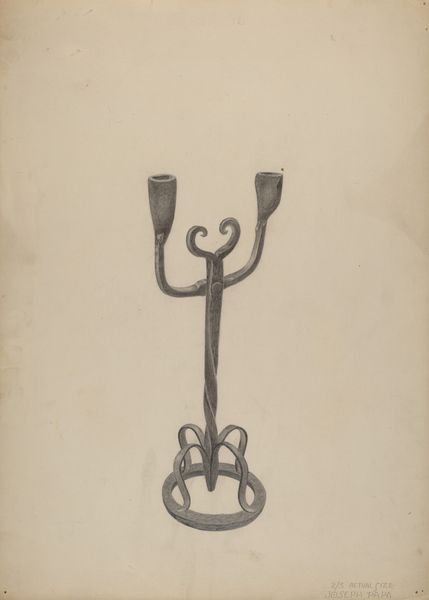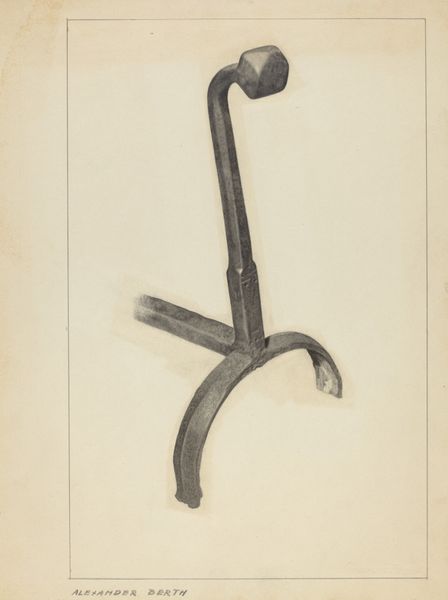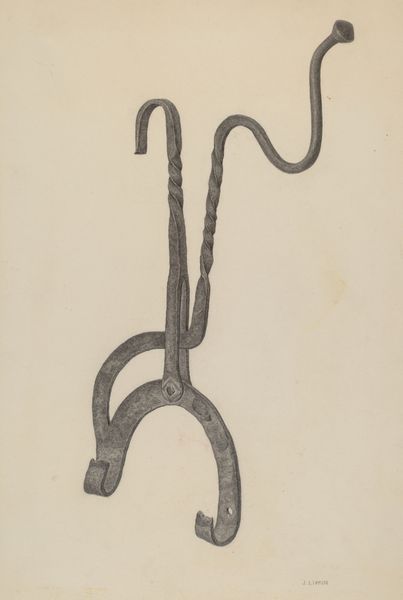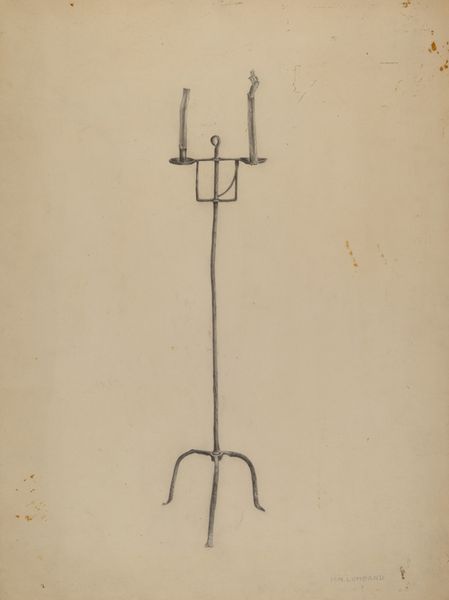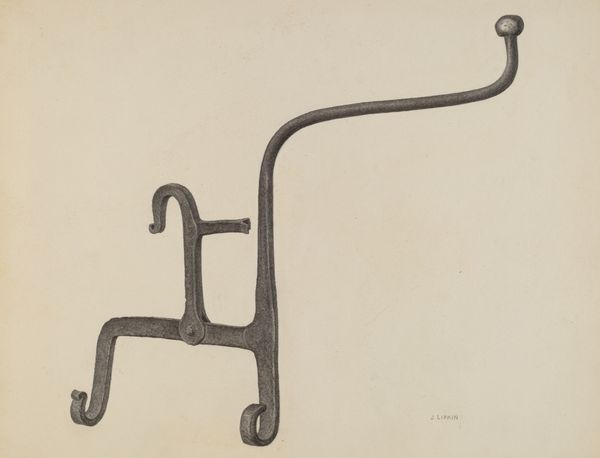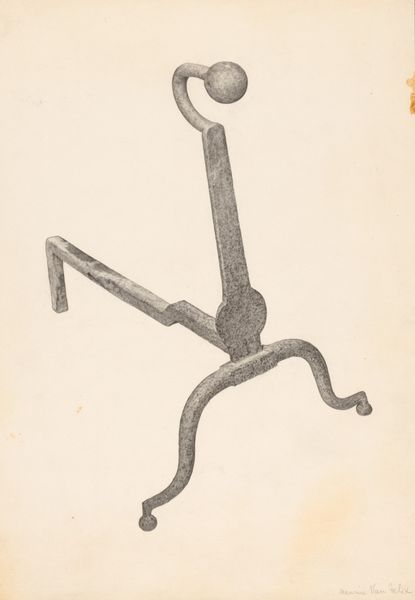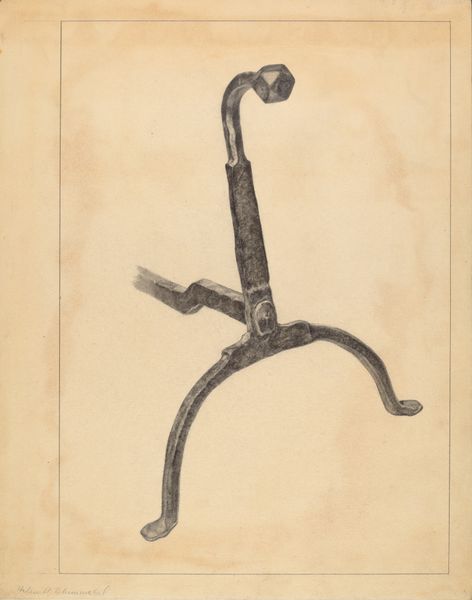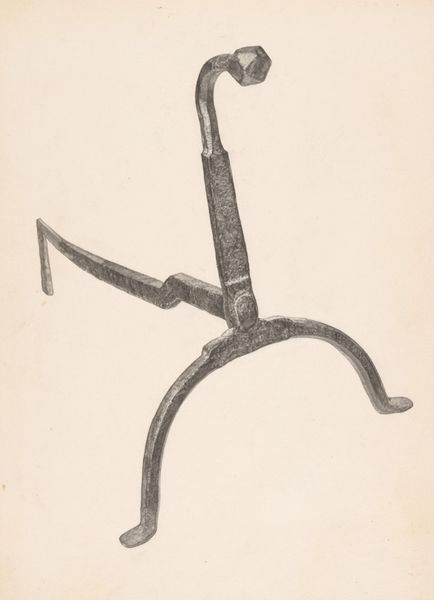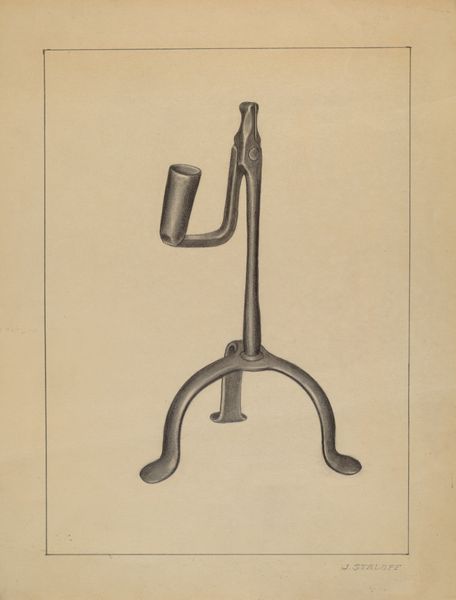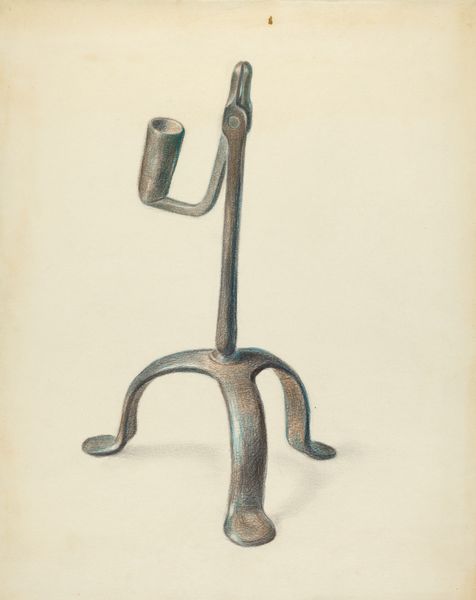
drawing, metal
#
drawing
#
metal
#
line
#
realism
Dimensions: overall: 35.6 x 25.9 cm (14 x 10 3/16 in.)
Copyright: National Gallery of Art: CC0 1.0
Curator: This is a drawing of an andiron by Lazar Rubinstein, made around 1939. What's catching your eye about it? Editor: It's stark. Functional, almost brutal in its simplicity. You get a real sense of the weight and texture of the metal, despite it just being a drawing. Curator: It’s an interesting subject choice, isn’t it? Elevating the everyday object. Rubinstein appears interested in American industry at this time, he produced a variety of technical drawings of manufacturing and transport. How do we see the shift to celebrating modern production methods reflecting social trends? Editor: Precisely! Look at the form following function. The way he highlights the joinery, the slight imperfections in the metal, he wants us to understand the making. Its interesting he represents this process in a pencil medium rather than charcoal or paint to match his metal counterpart, showing he understands the relationship of materials beyond use. Curator: Yes, and andirons themselves carry their own social history as a marker of wealth, becoming increasingly ornate in affluent homes. This one looks very robust - but there is something about its curves which softens the mechanical design. It isn't just utilitarian. Editor: I wonder what kind of fireplace this was intended for. Were we heading towards more efficient heating technologies, and what was this symbolising for middle class citizens? What fuel would be going into that firebox? How long would you spend a week tending to this? You can see it exists for labour purposes not display like wealthier andirons from the time. Curator: Rubinstein created this drawing as part of the Index of American Design project. His meticulous technique and clear observation are valuable contributions to our material history as it was evolving. The andiron and his drawings reflect the ethos of the New Deal—preservation of material, history, and a working aesthetic that embraced both craftsmanship and functional form. Editor: Absolutely, its capturing labor which for me is why it jumps off the page! It's a lovely object lesson in the social life of things. What is deemed valuable and why. Curator: Thank you for that material investigation, food for thought indeed. Editor: My pleasure!
Comments
No comments
Be the first to comment and join the conversation on the ultimate creative platform.
